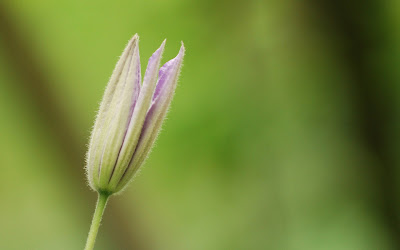You're on Twitter and use a mobile device? Here is a list of mobile device applications (obviously not exhaustive) that will hook you up to Twitter:
Windows Mobile:
Twikini
ceTwit
TwitToday
Blackberry:
Twitterberry
Blackbird
Twibble
iPhone (get from iTunes):
TweetDeck for iPhone
Tweetie
Twitterific
Twinkle
You can follow me on Twitter: http://www.twitter.com/setiabud
-- read more and comment ...
Wednesday, June 17, 2009
Twitter via Mobile Devices
By
Johannes Setiabudi
@
7:33 PM
2
comments! add yours!
![]()
Monday, June 8, 2009
jQuery UI Sortable with TABLE
Drag and drop sorting on a web application? This thought is so far fetched several years ago - and now everybody is or can do that easily with jQuery. Looking at the tutorials and documentation in jQuery's website, it lays out a simple method to call to make our list to become sortable.
$(function() {
$("#sortable").sortable();
$("#sortable").disableSelection();
});
With our corresponding HTML:
<ul id=sortable>
<li>one</li>
<li>two</li>
<li>three</li>
<li>four</li>
</ul>
Here is a demo on how that works.
<table id=anothersortable>
<tbody class=content>
<tr><td>one</td></tr>
<tr><td>two</td></tr>
<tr><td>three</td></tr>
<tr><td>four</td></tr>
</tbody>
</table>
Then our jQuery to be as such:
$(function() {
$("#anothersortable tbody.content").sortable();
$("#anothersortable tbody.content").disableSelection();
});
Click for demo for the simple table.You can even make this having sub-sort - or with children sorting. Like this:
<table id=subsortsortable>
<tbody class=content>
<tr><td>one</td></tr>
<tr><td>two</td></tr>
<tr><td>
<table><tbody class=subcontent>
<tr><td>three.one</td></tr>
<tr><td>three.two</td></tr>
</tbody></table>
</td></tr>
<tr><td>four</td></tr>
</tbody>
</table>
Adjust our jQuery to be as such:
$(function() {
$("#subsortsortable tbody.content").sortable();
$("#subsortsortable tbody.content").disableSelection();
$("tbody.subcontent").sortable();
$("tbody.subcontent").disableSelection();
});
Click for demo of this one.
UPDATE:
Viewer Coolboy in his comment below pointed out that viewing in IE7 may sometimes introduce unexpected behavior in the y axis. I can replicate the problem and have found a solution or a work around for it by using "handler".
Using handler, you basically designating a "dragging" point, instead of using the whole row as to drag. So in using handler, our code changes a little bit in both HTML and javascript.
Here is the updated HTML:
<table id=subsortsortable>
<tbody class=content>
<tr><td><label class="levelonehandle">X</label></td><td>one</td></tr>
<tr><td><label class="levelonehandle">X</label></td><td>two</td></tr>
<tr><td><label class="levelonehandle">X</label></td><td>
<table><tbody class=subcontent>
<tr><td><label class="leveltwohandle">X</label></td><td>three.one</td></tr>
<tr><td><label class="leveltwohandle">X</label></td><td>three.two</td></tr>
</tbody></table>
</td></tr>
<tr><td><label class="levelonehandle">X</label></td><td>four</td></tr> </tbody>
</table>
Then our javascript as such:
$(function() {
$("#subsortsortable tbody.content").sortable({
handle: ".levelonehandle"
});
$("#subsortsortable tbody.content").disableSelection();
$("tbody.subcontent").sortable({
handle: ".leveltwohandle"
});
$("tbody.subcontent").disableSelection();
});
By
Johannes Setiabudi
@
9:49 PM
32
comments! add yours!
![]()
Wednesday, June 3, 2009
How to Do Sharpening in Photoshop
Why do we need "sharpening"? Well, you actually don't. But, given 2 identical photos, you will see that the one that is sharpened will be able to identify that it seems to be better focused and "sharp". This, a lot of times enhance the photographic viewing experience and create a more detailed perception of the picture.
Let's look at an example:
Original photo (cropped)
Here is the same image after sharpening (and color correction) Pay attention to the pointy tip of the flower and the creases - and you can see a lot more if you view large (by clicking on the images).
Pay attention to the pointy tip of the flower and the creases - and you can see a lot more if you view large (by clicking on the images).
The sharpening technique I used is called "edge sharpening". There are a lot of variety and settings that people use for this kind of sharpening (click here for Google search result for "edge sharpening"). There are other types of sharpening, lab-sharpening or just plainly using the unsharp mask. I am not going to discuss those methods in this post, but only going to focus on edge-sharpening.
Here is the step-by-step process that I usually take (you can make this into an action if you want) - I am using Photoshop CS and I am assuming that it will be similar in the newer versions:
There you go - good luck!
-- read more and comment ...
By
Johannes Setiabudi
@
7:12 AM
1 comments! add yours!
![]()


